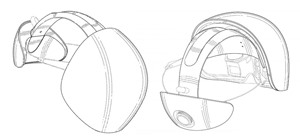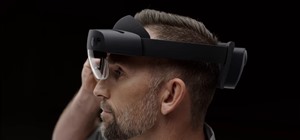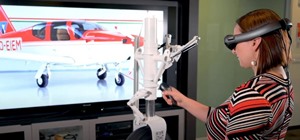Halloween may be finished, but the augmented reality chills are not over yet for some people. Arachnophobes are bravely facing their fears by cozying up to augmented reality spiders for a university study.
Wayne State University's Stress, Trauma, and Anxiety Research Clinic (STARC) has been using the Hololens 1 to make virtual spiders appear near people to offer a digital version of traditional exposure therapy, where therapists show people real feared objects until they learn to cope with them.
Don't Miss: Augmented Reality to Cure Cockroach Phobias
The augmented reality therapy trialed by the clinic uses the Hololens 1 and an unnamed Hololens app created by North Carolina developer CrossComm. According to the clinic's team, this method could also have applications for other issues, such as PTSD and substance abuse (a treatment method that has had success in similar use cases using VR devices and software).
Using technology and telepsychiatry, Dr. Arash Javanbakht and his team are empowering patients to conquer their fears.https://t.co/1lkQtSvGEA #fear #phobia #PTSD #AugmentedReality #AR pic.twitter.com/Xt7Ywc9CFe
AR-enabled therapy might also be more effective because seeing a wider variety of creatures in different settings can serve to help patients get over fears faster, according to notes shared via the clinical trial.
Using several spiders, and two different rooms, the AR-based therapy was able to quickly decrease the fears experienced by those who went through the therapy. People only needed to use the Microsoft device for an hour at a time, and the results stuck after a month, Dr. Arash Javanbakht, the Director of STARC, told Next Reality.
To get started, the therapist makes various spiders appear to a patient in augmented reality on the Hololens 1 (see gif below). The therapist then changes the size, shape, and color of the spiders. Some of the spider menu options include something called "web spawn," a wolf spider, and a black widow.

As part of the therapy process, the patient encouraged to get comfortable in the presence of the therapist, and then, that's right, a very small spider appears at the farthest part of the room. Soon, the patients work their way up to being alone in a room crawling with over 20 larger spiders.
The therapist can remotely view a digital map of the patient's environment and monitor the position of the patient and the spiders within it, thanks to the HoloLens camera. Over time, the patient aims to get closer to the digital spiders and, ultimately, tap a glass tank containing a real tarantula, letting them deal with everyday encounters.

A similar study Next Reality covered a few years ago tested a virtual reality headset to fight cockroach phobia, but that was done with the patient controlling the level of cockroach exposure.

This kind of situational therapy using virtual objects can also help people deal with other fears, such as a place that most people will have to enter at some point: the dentist's office. A few years ago, the University of Washington put virtual reality headsets on patients during their trip to the dentist's office. The study found that the VR device helped to distract patients from dental pain.
Wayne State University's new therapy will be marketed by a startup called xR Therapeutics, and will eventually use the Hololens 2's wider field of view to give users a better view of virtual objects. Next up, the team plans to add a talking 3D image of a person to help patients to get over their social phobias. The app will also add an expanded "feared object library" that will include humans, snakes, dogs, cats, clutter, dirt, fireworks, and lightning.
With the future expansion of the therapy and its feared object library, many of our worst fears seem capable of being made 'virtually' real but, hopefully, they can also all be overcome.
Just updated your iPhone? You'll find new emoji, enhanced security, podcast transcripts, Apple Cash virtual numbers, and other useful features. There are even new additions hidden within Safari. Find out what's new and changed on your iPhone with the iOS 17.4 update.























Be the First to Comment
Share Your Thoughts